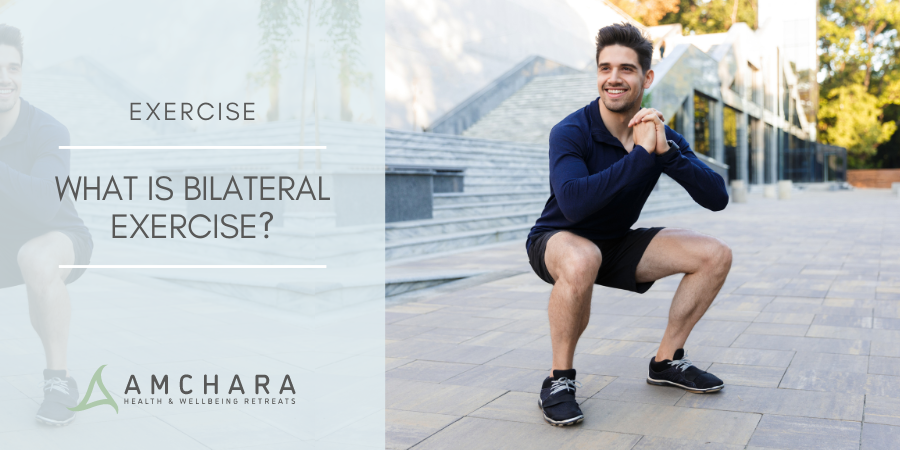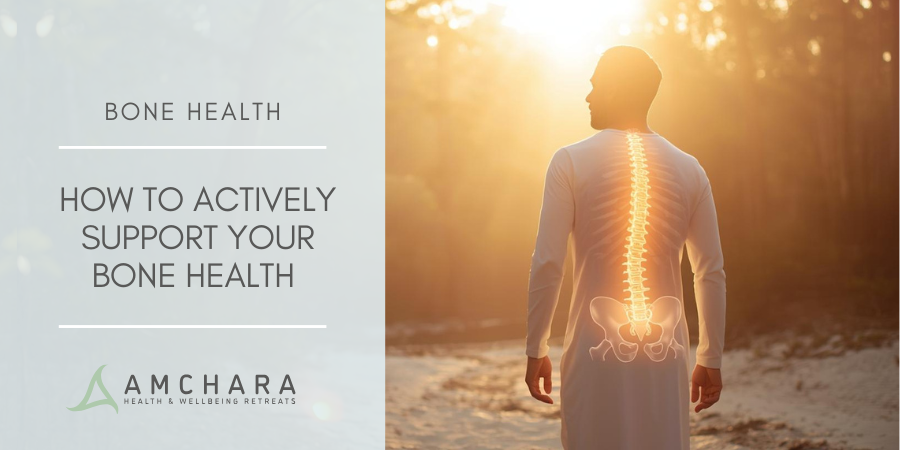Bilateral exercise refers to physical activities that engage both sides of the body simultaneously and symmetrically. These exercises involve the use of both arms, both legs, or both sides of the core, working together to perform movements. Examples include walking and running, as well as squats, push-ups, and bench presses. Bilateral exercises contrast with unilateral exercises, which focus on one side of the body at a time.
Our articles are always evidence-based and oriented to a Personalised Health approach, and we aim to provide you with actionable knowledge and tips to help you on your journey to optimal health.
In this article we’ll look at why bilateral exercise is important, its impact on different elements of your overall health, why correct form is essential when performing bilateral exercise, as well as some examples you can implement into your routine.
The importance of bilateral exercise
Bilateral exercises are crucial in supporting health for several reasons. They contribute to balanced muscular development, improved coordination, and enhanced overall physical performance. By engaging both sides of the body, these exercises promote symmetry and reduce the risk of developing muscle imbalances, which can lead to injury and postural issues.
Impact of bilateral exercise on different elements of overall health
Muscular strength and endurance
Bilateral exercises help in building muscle strength and endurance. Engaging larger muscle groups on both sides of the body simultaneously leads to more significant strength gains and improved muscular endurance. Enhanced physical strength contributes to better performance in daily activities. Stronger muscles support joint stability and reduce the risk of injuries.
Coordination and balance
Performing bilateral exercises requires the body to coordinate movements effectively between both sides, utilising your brain, ears, eyes, muscles and bones, and improving neuromuscular coordination and balance. Good balance and coordination are essential for reducing the risk of injury, particularly preventing falls, especially in older adults.
Cardiovascular health
Many bilateral exercises engage large muscle groups, increasing heart rate and promoting cardiovascular fitness. Enhanced cardiovascular health reduces the risk of the development of chronic health conditions such as heart disease, hypertension and stroke, and also improves blood circulation, and boosts overall stamina.
Metabolic rate and weight management
Engaging multiple muscle groups during bilateral exercises increases metabolic rate, leading to more calories burned during and after the workout. Having a higher metabolic rate helps reduce fat, contributing to effective weight management.
Posture and spinal health
Bilateral exercises require proper form and alignment, which strengthens the core and promotes better posture. This in turn reduces the risk of back pain and spinal issues, enhancing overall mobility and quality of life.
Mental health and cognitive function
All forms of exercise, including bilateral exercise, stimulates the release of endorphins and other neurotransmitters that enhance mood and cognitive function, and reduce stress, depression and anxiety, while also improving memory and cognitive abilities. Exercise can also provide an opportunity for you to be mindful and relax mentally.
Bone Health
Weight-bearing activities strengthen bones, by increasing bone density, and reducing the risk of osteoporosis.
How to perform bilateral exercises
To perform bilateral exercises effectively, it’s essential to focus on proper form, alignment, and controlled movements.
Always start with a gentle warm-up to prepare your muscles and joints for exercise by gradually increasing your cardiovascular activity. This can include light cardio, stretching, and mobility exercises.
Maintain proper alignment and posture during exercises to avoid injuries. Engage your core, keep your back straight, and ensure that your joints are aligned correctly.
Perform exercises with controlled movements, focusing on both the concentric (lifting) and eccentric (lowering) phases. Avoid using momentum to complete the movements.
Gradually increase the intensity of your workouts by adding weight, increasing repetitions, or adjusting the difficulty and length. This promotes continuous improvement and adaptation.
Examples of bilateral exercises
Walking and running
Walking and running are fundamental examples of bilateral exercises, involving coordinated movements of both sides of the body. These activities engage the muscles, joints, and neurological system in a symmetrical and balanced manner.
How walking works as a bilateral exercise
Walking is a low-impact, rhythmic activity involving alternating movement of the legs and the reciprocal swinging of the arms.
As one leg moves forward (the swing phase), the other leg supports the body’s weight (the stance phase). This alternating pattern ensures that both legs work equally, promoting balanced muscle development and joint function.
The arms swing in opposition to the legs (when the right leg moves forward, the left arm swings forward, and vice versa). This coordinated movement helps maintain balance.
The core muscles, including the abdominals and lower back, engage to stabilise the trunk and support the body’s movement. This engagement helps maintain posture and reduces the risk of back pain and injury.
How running works as a bilateral exercise
Running is a more intense form of bilateral exercise that involves similar principles as walking but with greater force and speed. Studies show that it can boost mood and executive function.
When you run, your legs move in an alternating pattern, with one leg pushing off the ground while the other swings forward. This action is more dynamic and requires greater strength and coordination compared to walking.
The arms swing more vigorously in running to counterbalance the increased movement of the legs. This helps maintain momentum and stability, reducing the risk of falling.
The core muscles play a crucial role in stabilising the torso and maintaining proper form during running. A strong core helps absorb the impact of each stride and reduces the strain on the lower back and hips.
Examples of walking and running exercises
Brisk walking
Walking at a faster pace increases heart rate and burns more calories. Aim for a pace where you can still hold a conversation but feel your heart working.
Interval Running
Alternate between periods of high-intensity running and low-intensity recovery. For example, run for 1 minute at a high intensity, then walk or jog for 2 minutes to recover.
Hill walking/running
Incorporate hills into your walking or running routine to increase the intensity and engage different muscle groups, particularly the glutes and calves.
Treadmill workouts
Use a treadmill to control speed and incline, allowing for precise adjustments to intensity and duration. This can help in creating structured walking or running programme.
Takeaway
Walking and running are quintessential bilateral exercises that offer a myriad of health benefits. They improve muscular strength, cardiovascular health, metabolic rate, mental well-being, and bone health. Through engaging both sides of the body simultaneously, they are essential for preventing muscle imbalances and injuries. Engaging in these activities regularly promotes balanced muscle development, enhances coordination, and supports overall physical and mental fitness.
To optimise the benefits of walking and running, it’s important to focus on proper form, gradually increase intensity, and incorporate variety into your routine. Whether you are a beginner or more experienced, walking and running can be tailored to meet your fitness goals and enhance your quality of life and wellbeing. Additionally, they support better posture and mental health.
If you are looking to optimise your health, why not come to one of our beautiful detox health retreats – designed to help you detoxify both physically and mentally – either in the tranquil English countryside or on the beautiful Mediterranean island of Gozo.
Our Personalised Health practitioners will support you, recommending positive, sustainable lifestyle choices tailored to your individual health circumstances and goals.
You will be immersed in a supportive and nurturing environment, combining a Functional Medicine and naturopathy approach, that enables you to switch off, relax and kickstart your health journey, and Change for Good.




